Description of the Japanese medlar and its cultivation

The medlar plant is a member of the apple or rosaceous subfamily. This fruit crop has several names - Eriobotria, Lokva, Japanese or German medlar (depending on the species). And also in some countries of Europe and Asia there are other names.
Tourists from Russia who go on vacation to southern and warm countries often meet the fruits of this tree in local markets. Fruits attract attention with their bright color and surprise with their original taste. Despite the fact that this is an exotic culture, it can be grown in your garden, creating the necessary conditions.
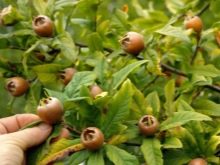

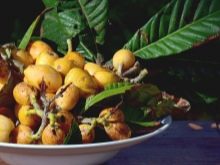
general description
Medlar japonica is a subtropical tree or shrub, often found in the forested areas of India, Israel, China and Japan (The land of the rising sun is the birthplace of the plant). Medlar occupies large territories. In comfortable conditions, trees reach a height of up to 12 meters. The trunk is not wide.
Low trees can be identified by the voluminous crown in the form of a ball. The plant mass is evergreen. The leaves are very large and up to 25 centimeters long. The color is dark green. They grow on short petioles. The shape is oval, curved. The surface is covered with pronounced veins. The shoots and inflorescences are dense, they give the shrub a gray color with a red tint. And also a brown tint is noticeable.
Ornamental qualities reach their peak during the flowering season, which occurs between October and November. At this time, there is a decrease in daylight hours. In the borders of the Black Sea coast, trees bloom later, from November to December.
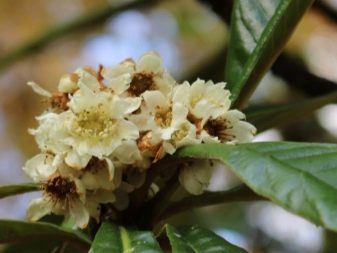
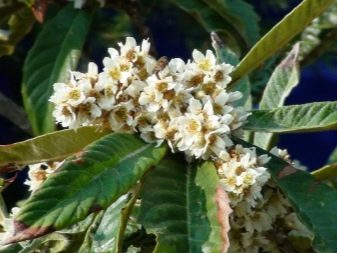
Corolla-shaped flowers are small and clustered in inflorescences. Color - white and yellow. Up to 30 buds can grow in one inflorescence at the same time, but some varieties are capable of forming up to 80 flowers. The aroma is pleasant, with a slight almond bitterness.
A feature of this culture is the fact that the harvest is formed in winter, and it ripens from April to June of the next year. The harvest begins in July. Then the fruits become bright, sweet and juicy. Their consistency changes to loose.
The peel of the berries is dense, but you won't be able to store the ripe crop for a long time. The fruits can only be stored in the refrigerator, where they will remain fresh for a month and a half.
For the reason that under natural conditions this culture grows in a warm and humid climate, the medlar does not have high frost resistance. Within the boundaries of the northern regions and in central Russia, shrubs are grown in greenhouses or greenhouses.
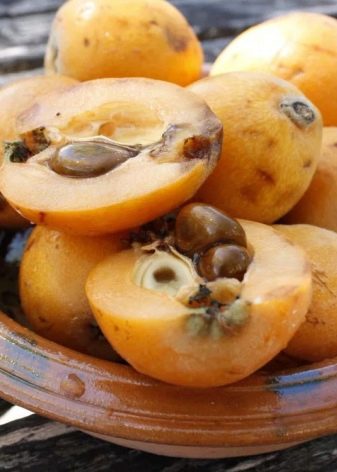
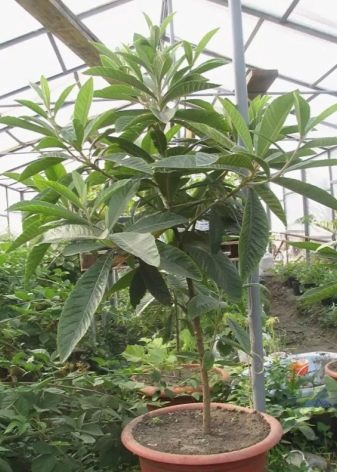
Other features of an exotic fruit crop.
-
Medlar begins to bear fruit at 3-4 years of age. In Azerbaijan and Georgia, the first flowers open between September and October.
-
Peduncles with a large number of processes are strong and massive. The diameter of the flowers is about one centimeter. Flowering continues for three months.
-
Large brown seeds are formed inside each fruit. Their shape can be either triangular or round. They are inedible, but they work well as an ingredient in tinctures.
The first harvest can be seen in early spring or in April, but the fruits ripen only in winter. The duration of the fruiting period reaches two months. Fruits growing on the lower branches ripen first. Outwardly, the fruit looks like small yellow apricots or plums. Diameter - 5 centimeters.
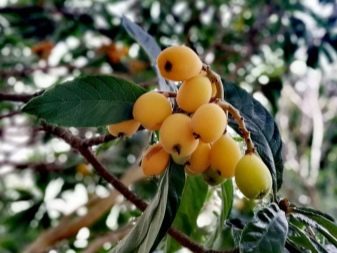
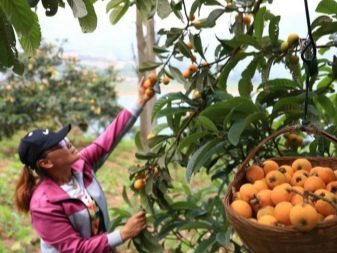
The pulp is bright and juicy, and the skin is covered with small fibers, therefore, it is removed before use.The unique sweet and sour taste of the fruit is noted, reminiscent of pears, strawberries and cherries. Some talk about a pleasant apple scent. It is recommended to harvest unripe.
The variety is often grown on the territory of the former French colonies due to its high decorative qualities. In Russia, the trees of the German medlar are found in the South Coast or the Caucasus. Due to the open sepals, the fruits appear hollow.

The plant is considered a self-pollinated and cross-pollinated horticultural crop. To obtain a rich harvest, 2-3 seedlings should be planted in one area, keeping a distance of 3-4 meters between them. When planting medlar as a living decor, the interval is reduced to 1.5-2 meters.
Note: A variety called Germanic medlar is also common. This culture prefers warm winters, cool summers and dry climates. The main differences lie in the size and taste of the fruit - the diameter varies from 2.1 to 3.3 cm. These are sour and dense fruits.
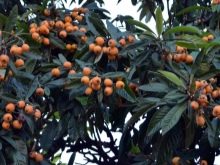
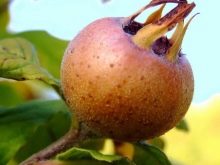
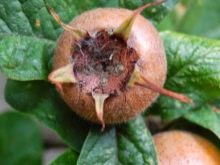
Spreading
Japanese Eriobotria occupies large areas in Asian countries. In the warm regions of Russia, there will always be a place for this fruit plant: Abkhazia, Sochi and other areas with a subtropical climate and mild winters. If the weather conditions are not suitable for an exotic crop, it is planted indoors. In a greenhouse, you can easily create a special climate in which trees will not only bloom, but also bear fruit.
Some gardeners grow plants at home. Due to the fact that they never shed their foliage, the medlar can be used as an evergreen decoration. The taste of fruits grown in such conditions will be excellent.

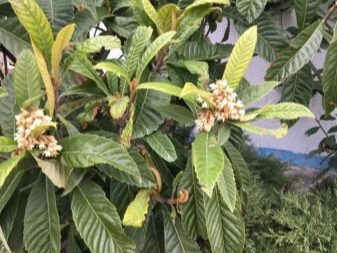
Popular varieties
Experts identify a whole list of varieties of Japanese medlar, which have a minimum of requirements for cultivation and care. The following varieties can be grown even in the country: "Sayles", "Komun", "Premier", "Early red", "Champagne", "Takana", "Morozko". All these varieties can be used as a living decoration of the garden, and juicy sweet and sour fruits diversify the usual diet.
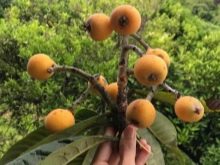
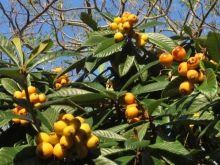
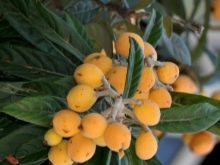
Landing
If climatic conditions allow, exotic fruit crops can be planted directly in open ground. The seedlings are transferred to the ground in spring, and during the warm season, young shrubs will have time to develop enough, forming a powerful root system and a massive crown. Spring planting is considered the most suitable, since when plants are transplanted in the fall, they can die due to sudden changes in temperature.

The Japanese medlar is planted in areas carefully illuminated by the sun. Choose locations that are protected from drafts and wind. When laying a mixed garden, you need to take into account the neighborhood with other crops. Exotic trees grow well next to apple, hawthorn, pear or quince. Do not plant shrubs next to apricots or nuts.
Note: you can grow a seedling yourself, from a seed. And also medlar propagates by cuttings or seedlings. Gardeners graft cuttings to other fruit crops. Eriobotria easily takes root on all trees with which it comfortably neighbors.
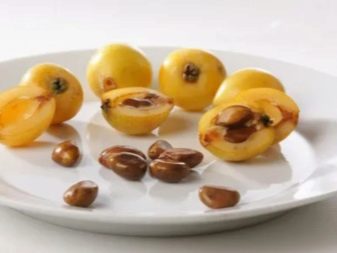
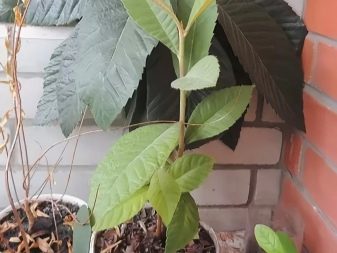
Lokva does not have any special requirements for the composition of the soil, but to make the growing process as simple as possible, you should opt for soil with neutral acidity. The optimum pH should be between 5 and 5.6. And also the earth should be nutritious, and the groundwater should be kept away from the roots.
If the composition or structure of the land is not suitable for growing exotic plants, you need to use a special soil mixture. It is not difficult to prepare it. The composition is as follows: humus and black soil are mixed in a 1: 1 ratio. And also a recipe is used in which black soil, peat and sand are mixed in proportions of 2: 1: 1. The planting pit is made twice the recommended parameters, and the removed soil is enriched with compost or humus.

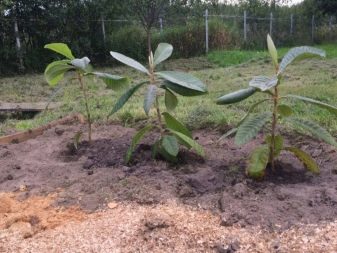
The finished soil mixture is fed with nitrofoskoy or "Kemira" (80-100 grams per pit). The fertilizer must be thoroughly mixed with the ground. A drainage 20-25 centimeters thick is placed at the bottom of the planting hole. Crushed stone, expanded clay or other similar materials will do.
Half of the soil mixture is poured into a cone, then a bucket of water is poured into the pit. A seedling is placed at the top of the cone, sprinkling it with the remaining substrate. The plant is placed in such a way that the root collar remains flush with the soil after compaction of the earth. A little more earth is poured around the trunk and watering is repeated.
As soon as the water is absorbed, the area around the tree is covered with organic mulch: straw, sawdust, peat, humus, wood shavings. The seedlings are attached to the support with twine or tape using a soft pad.
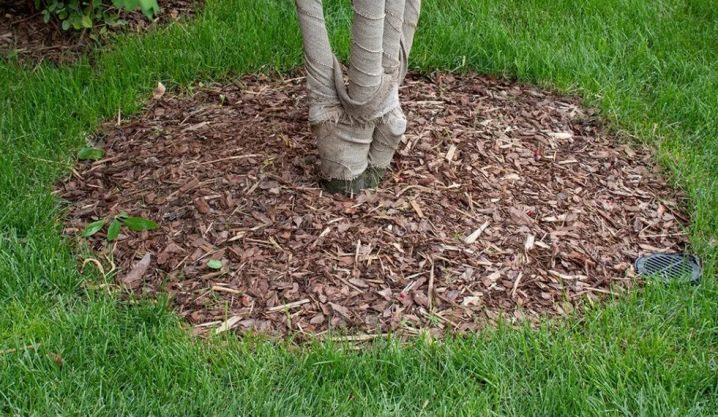
Growing care
It is necessary to take care of the Japanese medlar correctly with the fulfillment of all the necessary requirements. To achieve regular flowering and fruiting, you need to adhere to a certain scheme of fertilizing and watering. If you devote enough time to caring for the crop, after 3-4 years you can harvest the first harvest of tasty and bright fruits.
Watering
Eriobotria grows in warm climates and needs systematic irrigation. The bulk of the roots grows in the upper layers of the soil (40-60 centimeters deep). Water the culture once for 15-25 days. Use settled or warm water heated to 20 degrees Celsius.
Humidification should be moderate, as excessive amounts of water will negatively affect the development of trees. They may even die.
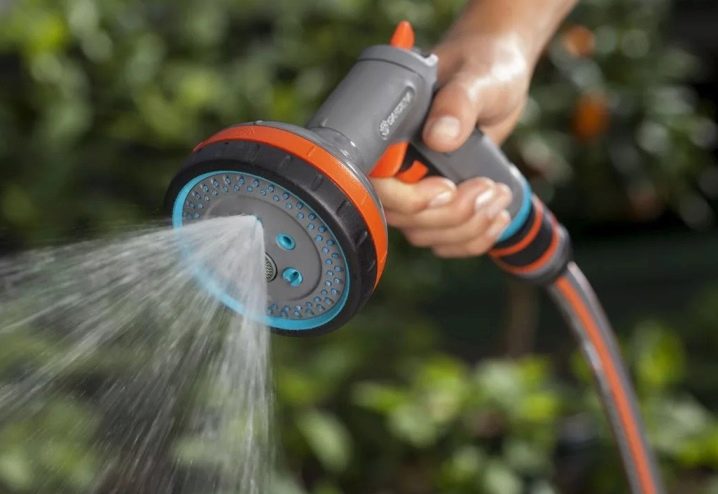
Top dressing
Fertilize the culture before the irrigation procedure. During the first two years, the regularity of top dressing is once every 30-45 days, using easily digestible mineral fertilizers. Every 2-3 weeks they are alternated with organic.
As soon as the age of the plants reaches three years, they switch to two- or three-time feeding, which are applied according to the following scheme.
-
Bird droppings or mullein will be useful in the fall, before flowering. Proportions - 1 part for 10-12 liters of water or 1 part for 8-9 liters of water, respectively. Instead, you can use "Kemira", nitrofosky or nitroammophos.
-
Fertilizers with trace elements will be needed during the ovary formation phase. It can be wood ash or Kemira. During this period, gardeners recommend carrying out foliar dressing using a solution that contains ash extracts and other components.
-
When the fruits are just beginning to ripen (in spring), switch to phosphorus-potassium fertilizers or nitrophosphate.

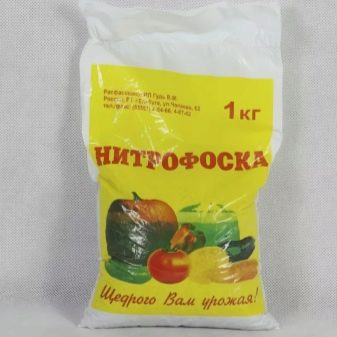
If you overfeed the culture, the formation of a lush crown will begin, due to which flowering and fruiting suffer.
Diseases and pests
When grown at home, lokva practically does not get sick and is not attacked by harmful insects. When planted in open ground, trees can suffer from leaf rust or soot fungus. And also flowers and fruits attract the attention of scale insects and aphids.
Violations of the temperature or irrigation regime have a bad effect on the health of young plants. They are affected by mold. It is undesirable to use chemical preparations with aggressive compositions to protect medlar from diseases and pests. It is recommended to use bioinsecticides or biofungicides. They are completely safe for humans, animals, birds and insects.
Note: with proper care, this exotic culture can develop in areas with different climates, be it a region of the middle zone, Krasnodar Territory or the Crimean peninsula.
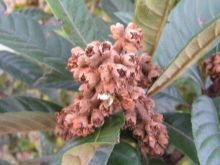
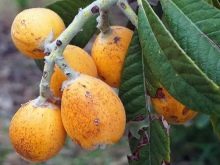














The comment was sent successfully.